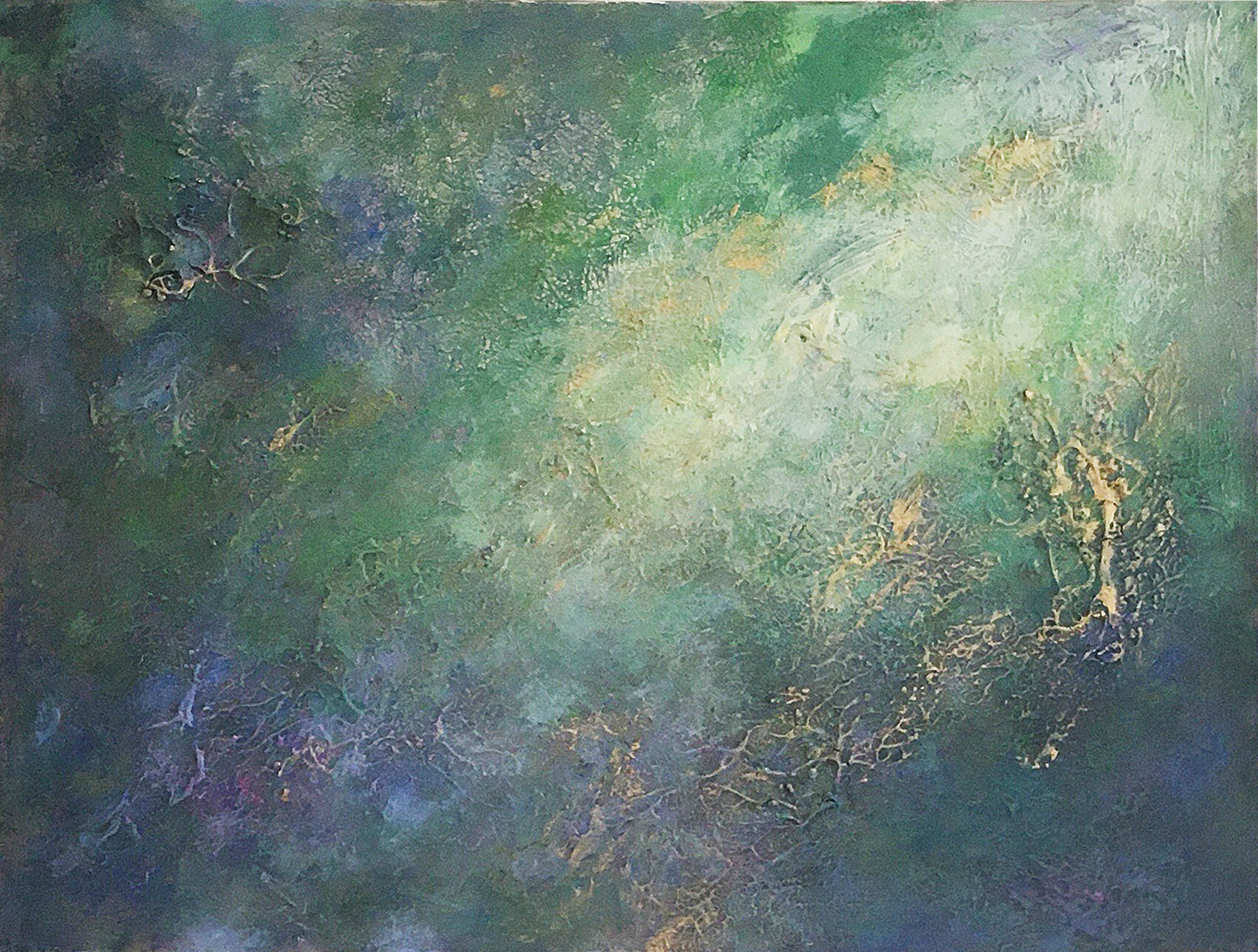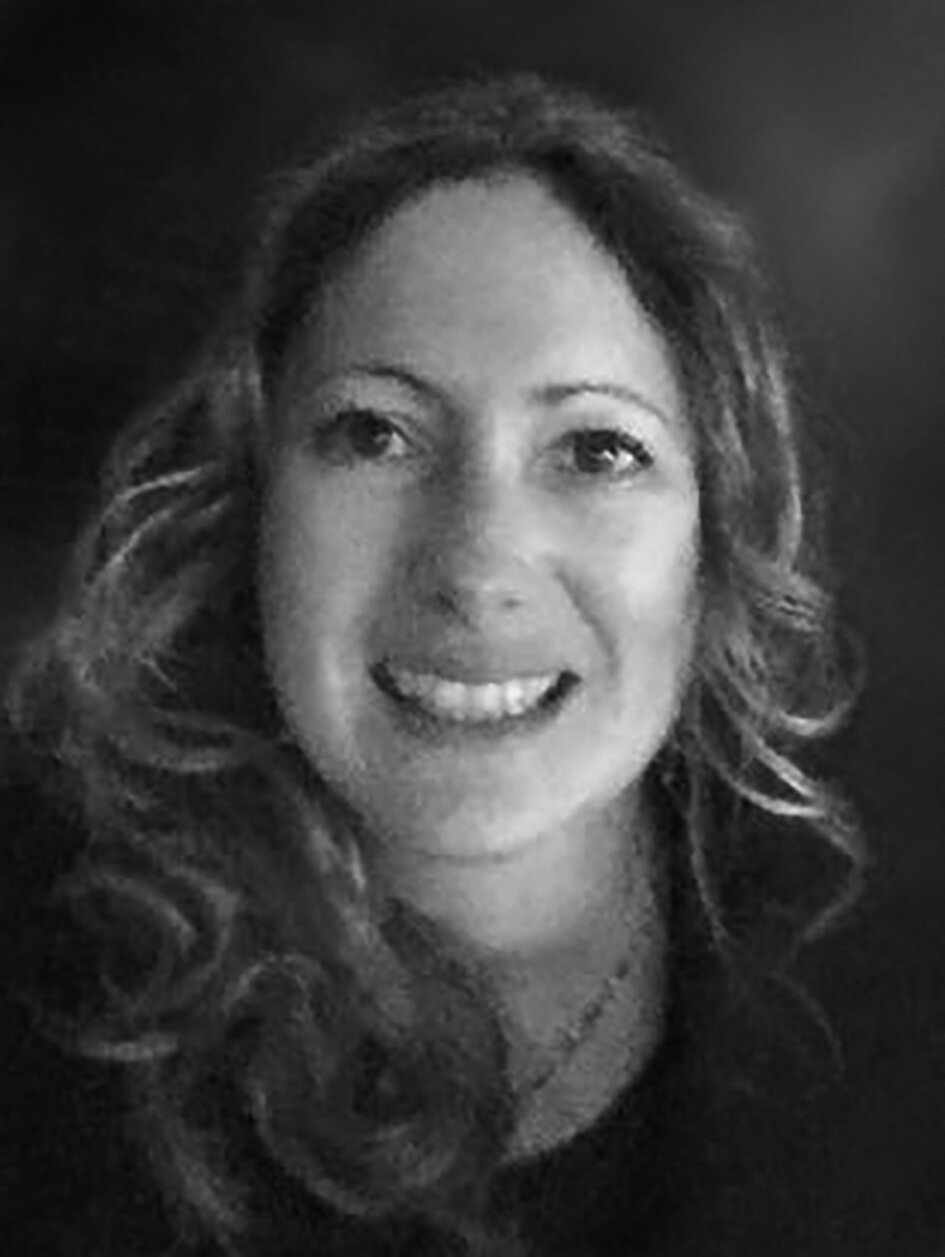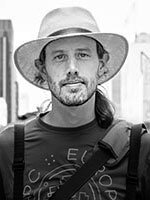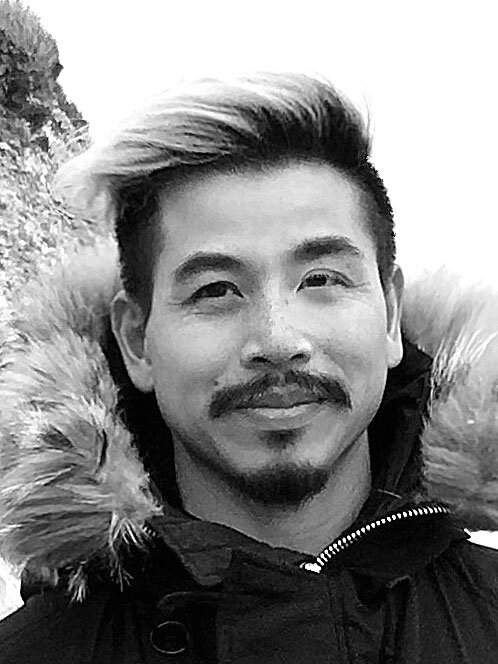Galerie Alpine: Your art was representational before, but now you’re exploring an abstract style. Why the switch?
Alanna Rowntree: I have loved trying out a new abstract style, because before painting for me was about trying to represent exactly what I saw, and I tried to make things perfect. Abstract painting is about freedom for me as the artist and for the viewer. I love that it can mean something different for me, and someone else with different experiences in life can see something in it of themselves. I think that’s the beauty and allure of abstract art. I don’t feel there is anything finite about it. I would like viewers to experience something personal, whether it is touching on a particular emotion, or it makes them feel calm to look at it and explore the piece.
Galerie Alpine: Hopefully, the world is on the path the stabilising, and we're seeing the end of the pandemic. How do you think your work will evolve?
Alanna Rowntree: I don’t know, but I like not knowing how it will look. I purposely like to not decide how my finished paintings will look when I begin. The process and building layers are what it is about, and I ‘find’ the finished piece eventually. I love that process of exploring and not knowing. I hope to keep finding more freedom in my work, and, hopefully, it will adapt with me.
Galerie Alpine: Your "purposely unstructured" process!
Alanna Rowntree: Exactly. For a person who worries a lot and gets anxious it is an incredible thing to have that freedom and flow.
Galerie Alpine: You are known to rework and paint over pieces you don't think are working well.
Alanna Rowntree: I do that quite a bit. If it doesn’t feel right for me as it is, I will just start over. It is so refreshing. The process is all part of the finished piece, and all those layers are always going to be there.
Galerie Alpine: Layers are an important component of your paintings. How do you go about creating them?
Alanna Rowntree: I love the process! I really enjoy the process of creating texture. It is very satisfying. There is lots of drying time between layers. A piece can take some time, as I will paint a very messy random layer on top of the gesso texture base for colour. Next, I start to layer and layer my shades. I use gesso and brushes, or sometimes even household items like rock salt and cling film to create the shapes and desired texture! There are the emotional layers that go into the physical layers of paint too.
Galerie Alpine: These aren't simply paintings. They're actually mixed media.
Alanna Rowntree: Yes, and I can see myself going further down that route in the future, as I love the tactile nature of it.
Galerie Alpine: I'm starting to see a common theme in all aspects of your work. It's freedom.
Alanna Rowntree: It is all about finding freedom. It is so liberating. It really is.
























